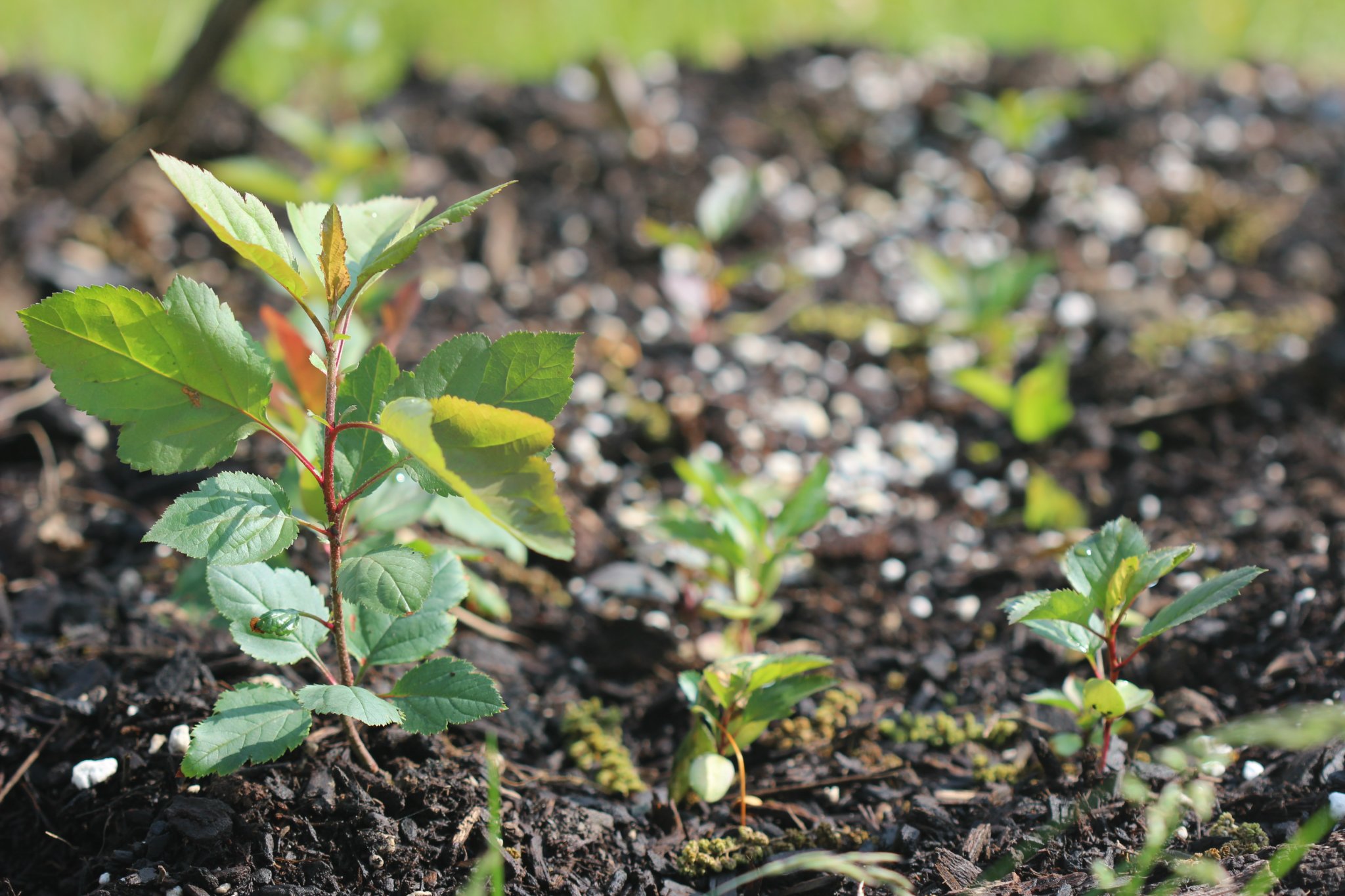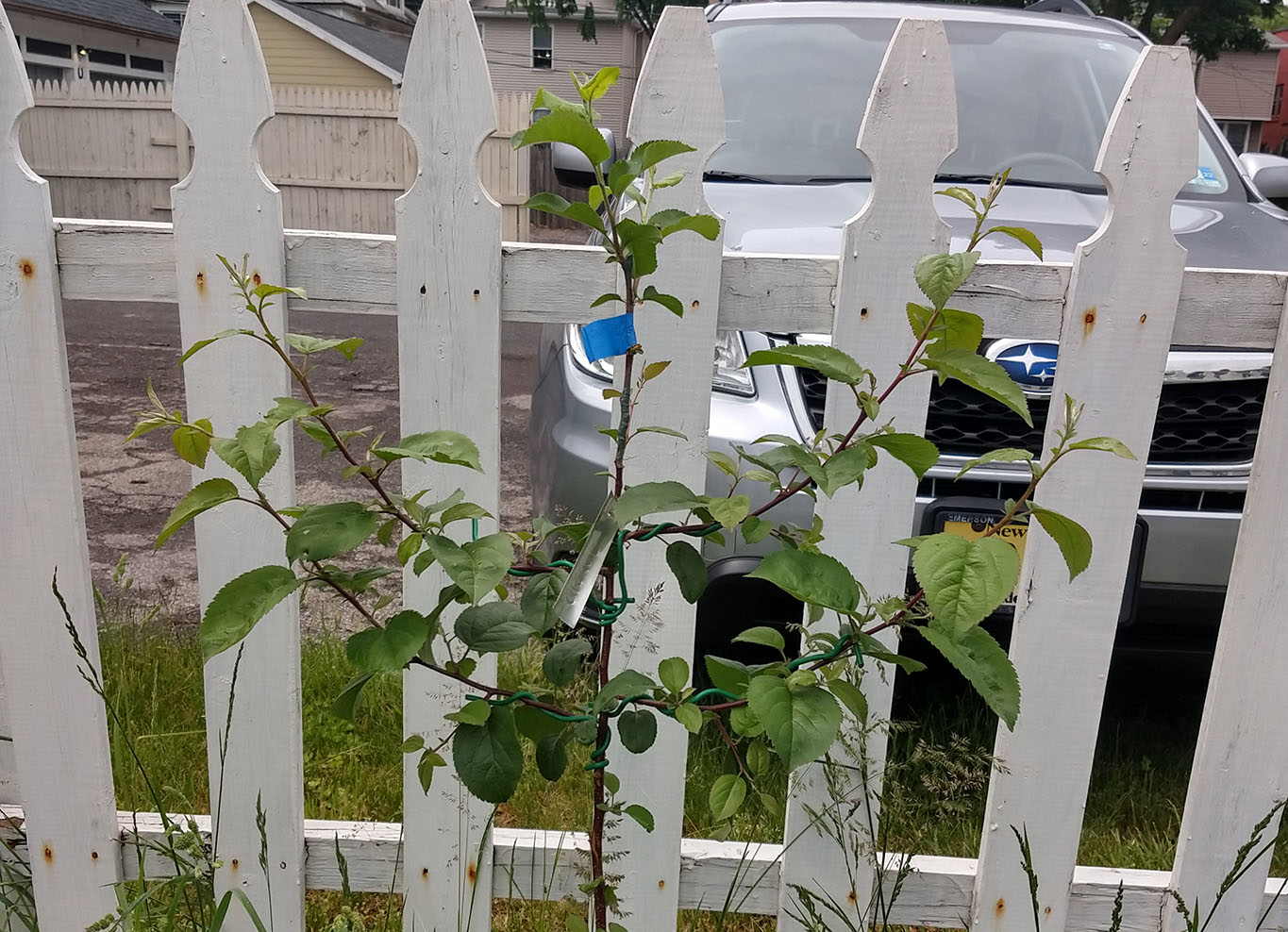Why Grow an Apple From Seed?
 young apple seedlings
young apple seedlings
There a big fat myth floating around out there that says it takes growing out thousands of apple trees to get one decent apple tree. One may assume assume it must be nearly impossible to grow a decent apple from seed. This is simply not true. Many of the world’s most beloved apples started as open-pollinated chance seedlings. Macintosh and Granny Smith are popular open-pollinated apples that have been a huge commercial success. Honey Bee is a recent example, it was an open-pollinated seedling from a Honeycrisp apple.
The original statement isn’t exactly wrong, it’s just missing context and doesn’t apply to someone who just wants an apple tree in their backyard. The full statement really should be “In a commercial apple breeding program, it takes thousands of crosses to select for ALL of the characteristics targeted by the breeding program.”
As backyard growers and small-scale orchardists, we’re just looking for a bit of fruit for ourselves and our families. Many criteria that are required for an apple to be a commercial success such as how long an apple keeps in storage or the duration of the ripening period may not be relevant. Some characteristics that are undesirable for a commercial grower may be desirable for a home grower. For example, an apple that ripens progressively over a period of a few weeks instead of all at once may be beneficial to the home grower because they can enjoy just-picked apples for a longer period of time.
Bitter Green Apples
Despite the fact that excellent apples can be grown from open-pollinated seeds, growers are still afraid of the bitter green apple boogeyman. If you collect seed from an apple that you like, the child tree will have some characteristics of the parent. The consensus among modern hobby growers seems to be that more often than not, the apples are at minimum edible and often tasty. Steven Edholm’s first apple, Bite Me! was grown from an open-pollinated Wickson seed. By all accounts, Bite Me! is a tasty apple that’s worth growing.
Even if you don’t like your tree’s apples, your tree is valuable. The entire tree can be regrafted with other varieties, used as a pollinator for other trees or simply as an attractive flowering tree in the spring. Having more changes for pollination is always a good thing!
Something a Bit Different
To me, I find it a bit exciting that I’ll be getting an apple that no one has ever tasted before. Each seed holds the potential of discovering an amazing apple! It’s also an opportunity to work with apple varieties like Cosmic Crisp and Snapdragon that are unavailable to most growers.
If you eat apples, apple seed is a free resource that can be used to get a small orchard started at no cost. You can plant several seedlings in one spot, increasing the chances that one of your seedings will turn into a healthy, mature tree. Disease prone seedlings can be pulled, and healthy seedlings can be transplanted or given away. I have found that the health and vigor of my seedling trees is higher than that of what I’ve purchased at big box stores.
Drawbacks
A couple drawbacks to seedling trees in a hobby orchard context are that the mature height of the tree is going to vary from seedling to seedling and there’s no guarantee when the tree will first set fruit. Some seedlings could reach 20-25 feet if left to grow to their full size, but it is possible to manage the height of a tree by pruning. There’s also no way to tell when a tree will set fruit for the first time. It might only take three years in the case of James Prigino’s seedling tree, or it could take much longer.
What Does the Future Hold?
For my seedling trees, I am managing the height by a combination of pruning and placement. I will allow the trees planted in the back part of my yard to grow taller. I also have three trees along a fenceline. With these trees, I am training them to have a modified espalier shape. I will be cutting the lead branch once they get above a certain height and am prepared to keep them pruned.
 A 2-year old apple tree that is starting to be shaped. The leader branch is grafted, and the rest are original branches.
A 2-year old apple tree that is starting to be shaped. The leader branch is grafted, and the rest are original branches.
This year, I also happened to have more scion material than I anticipated. Since I already bench-grafted the roostocks I started grafting to my seedling trees, including ones that I eventually plan on moving.
Having the extra seedlings as a storage mechanism for scion wood is great. It’s always good to have a backup, and if I don’t need it I can make trades for other varieties.
Get Growing, Johnny!
If I haven’t made it clear already, growing apples from seed has a lot of updates and very few downsides. So what are you waiting for? The sooner you get your tree in the ground the sooner you will be enjoying fresh apples from your tree.
